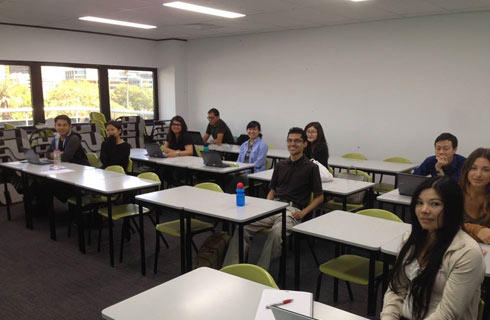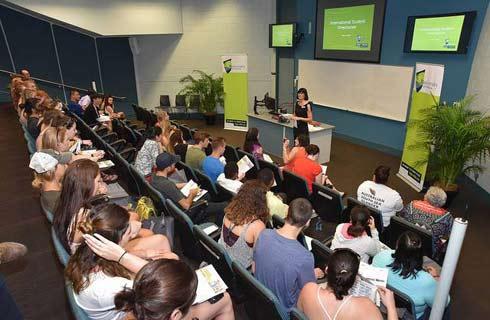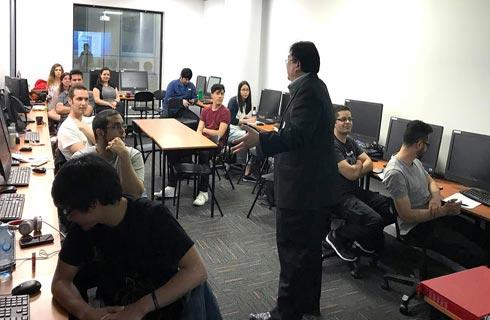国际学生入学条件
The general requirement for admission for a US student is a bachelors degree from a regionally accredited institution comparable in standard and content to a bachelors degree from the University of California Graduate admission through the regular process requires an overall scholastic average including any postbaccalaureate study of B 3.0 on a 4.0 scale or better or its equivalent if the letter grade system is not used.
Your IELTS Academic overall band score should be at least 7.0. 7.0 is the minimum required.
Your TOEFL score on the paper and pencil test must be at least 560 or at least 87 on the internet-based test.
For the internet based TOEFL TOEFL iBT the following are the expected scores for each section
Writing - 25
Speaking - 24
Reading - 21
Listening - 17
Statement of Purpose
Personal Statement
ResumeCV
Three letters of recommendation
One set of official transcripts You will be uploading scanned or digitized copies with the online application Official transcripts are also required to be sent electronically or via regular mail Applicants who have studied outside the US Official transcripts are only required if offered admission
展开
IDP—雅思考试联合主办方

雅思考试总分
7.0
- 雅思总分:7
- 托福网考总分:87
- 托福笔试总分:560
- 其他语言考试:NA
CRICOS代码:
申请截止日期: 请与IDP联系 以获取详细信息。
课程简介
The Neuroimaging/Cognitive FAR is designed for students pursuing a professional career in neuroimaging, either in clinical practice or in neuroscience research. The multidisciplinary approach provides training in both basic science and technological principles of modern neuroimaging methods, and in their application to the understanding of neurological function and neurological disorders. The Neuroimaging/Cognitive FAR is comprised of a set of selected core and elective courses designed to provide students with a firm grounding in the theoretical, conceptual, and practical issues involved in studying the human and non-human brain using neuroimaging methods - from the molecular to whole brain human imaging. Core courses allow students to gain an understanding of the physiological principles underlying the types of imaging modalities commonly used to examine micro- and macro- brain structure and function as well as psychologically induced changes in physiological signals. The FAR includes research design and data analysis. Participants will obtain hands-on experience with data acquisition, processing, statistical analysis, and visualization through the use of leading edge graphical workflow environments and image processing software packages. Core courses emphasize the consideration of brain structure and function using modern medical imaging (e.g. MRI, PET, OIS, etc) and related neural recording techniques (e.g. EEG). Across these intensive courses, students will gain a full appreciation of the various cognitive factors that influence patterns of brain activation measured with functional imaging methods (e.g. BOLD, fMRI and PET) as well as becoming familiar with the effects of disease on brain anatomy and integrity. Students will gain exposure to neural tissue imaging methods (e.g. light, confocal, molecular, and related microscopy approaches), their application, and comparative strengths and limitations. At the completion of the Neuroimaging FAR, it is expected that participants will be fully prepared to critique, design, and participate in conducting research studies using a variety of neuroimaging methods, appreciate potentials and limitations of current neuroimaging methods and techniques, better understand the broad range of expertise required in a brain imaging research program, and be positioned well for careers in neuroimaging laboratory research.
展开







 预科
预科 奖学金
奖学金 实习机会
实习机会 在校学习
在校学习 跨境学习
跨境学习 校园授课-线上开始
校园授课-线上开始 在线/远程学习
在线/远程学习














 麦吉尔大学继续教育学院
麦吉尔大学继续教育学院

 布朗大学
布朗大学

 罗格斯大学新布朗斯维克分校
罗格斯大学新布朗斯维克分校

 达特茅斯学院
达特茅斯学院

 罗切斯特大学
罗切斯特大学

 马里兰大学帕克分校
马里兰大学帕克分校









